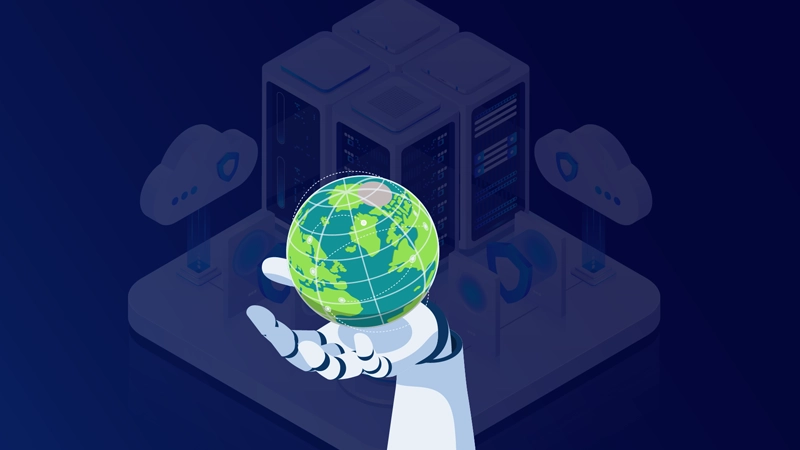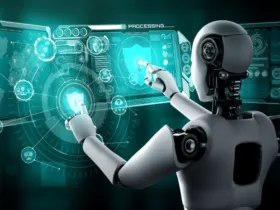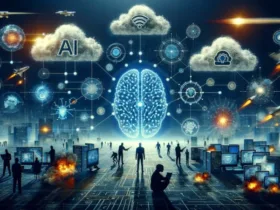As technology evolves, so does the sophistication of cyber threats. Experts predict that 2025 will witness a surge in AI-powered cyberattacks, presenting significant challenges for individuals, organizations, and governments worldwide. These advanced threats, leveraging artificial intelligence (AI), are expected to be more complex, targeted, and difficult to detect.
The Rise of AI in Cyberattacks
AI’s ability to analyze massive amounts of data, learn patterns, and automate tasks makes it a double-edged sword. While it has revolutionized industries, malicious actors are increasingly harnessing AI for cyberattacks.
Key characteristics of AI-driven cyberattacks include:
Highly Targeted Phishing Campaigns
AI enables attackers to craft convincing and personalized phishing emails by analyzing data from social media, email threads, and public records. These messages are harder for individuals to identify as fake, increasing the likelihood of success.
Automated Vulnerability Exploitation
AI systems can scan networks at unprecedented speeds, identifying vulnerabilities in real time. This automation allows hackers to exploit weaknesses faster than organizations can respond.
Sophisticated Malware
AI-powered malware can adapt to avoid detection by traditional cybersecurity tools. By mimicking legitimate processes or learning from detection attempts, these malicious programs become increasingly resilient.
Deepfake and Social Engineering Attacks
The use of AI-generated deepfake videos and audio files is expected to rise, enabling attackers to impersonate trusted individuals or manipulate public perception.
Potential Targets in 2025 for Cyberattacks
AI-powered cyberattacks are likely to target a wide range of sectors, including:
- Critical Infrastructure: Power grids, water systems, and transportation networks are high-value targets due to their importance to national security.
- Financial Institutions: Banks and payment systems may face AI-driven fraud, ransomware, and data breaches.
- Healthcare: Hospitals and medical systems remain vulnerable, with attackers aiming to disrupt operations or steal sensitive patient data.
- Small and Medium Businesses (SMBs): SMBs often lack robust cybersecurity measures, making them easy targets for automated attacks.
Challenges in Combating AI-Driven Cyber Threats
The rise of AI in cyberattacks presents unique challenges:
Detection Complexity
Traditional cybersecurity systems may struggle to detect AI-powered threats, as these attacks can mimic legitimate behaviors and continuously evolve.
Resource Intensity
Defending against AI-driven attacks requires significant investment in advanced cybersecurity tools and skilled personnel, which may not be feasible for all organizations.
Global Collaboration Gaps
The international nature of cybercrime complicates enforcement and coordination among countries, creating loopholes for attackers to exploit.
Ethical AI Use
Ensuring ethical standards in AI development is critical, as unchecked advancements could inadvertently fuel cyber threats.
Defensive Strategies for 2025
To address the growing threat of AI-powered cyberattacks, cybersecurity professionals and organizations must adopt proactive strategies:
AI-Enhanced Cybersecurity Tools
Leveraging AI to strengthen defenses is essential. These tools can analyze data patterns, predict threats, and automate responses to minimize damage.
Continuous Threat Intelligence
Organizations should invest in real-time threat intelligence to stay ahead of emerging attack vectors and vulnerabilities.
Employee Training and Awareness
Regular training programs can help employees recognize and respond to phishing attempts, social engineering tactics, and other attack methods.
Zero-Trust Security Models
Implementing zero-trust architectures ensures that every access request is thoroughly verified, reducing the risk of unauthorized breaches.
Quantum-Resistant Encryption
With quantum computing on the horizon, organizations should explore quantum-safe encryption methods to protect sensitive data from advanced decryption techniques.
The Role of Governments and Global Organizations
Governments and international organizations have a critical role in mitigating AI-driven cyber threats. Their efforts should include:
- Enforcing Cybersecurity Regulations: Mandating robust security measures across industries to ensure a baseline level of protection.
- Promoting Public-Private Partnerships: Encouraging collaboration between governments, tech companies, and cybersecurity firms to develop innovative solutions.
- Fostering Global Cooperation: Creating international agreements to address cross-border cybercrimes and share intelligence.









